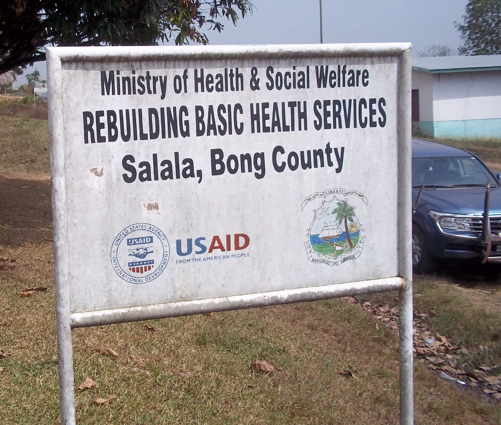First the bad news. Ebola is still an out of control international epidemic. The death toll surpassed 1,000 last week. And it’s becoming increasingly clear that fear of ebola may end up being deadlier than ebola itself. Hospitals are shut. And already fragile health systems are extended beyond capacity.
I visited a number of hospitals in Liberia a couple years ago when I tagged along with UNITAID chairman Phillippe Douste-Blazy as he visited UNITAID grantees. The country was about 9 years past its brutal civil war and in the process of rebuilding state institutions, including its health system.
We visited the crowded maternity ward of one hospital. The doctor on site admitted that one woman dies from childbirth complications every few weeks. That was in the hospital. For women who can’t reach basic medical services, the rate is undoubtedly higher.
Hospitals in Liberia are being closed down. Over 30 health workers have died from Ebola and many more are staying away out of legitimate concern for their health. Women are still giving birth. And many of those women will have complications that require medical attention. This story by Jina Moore of Buzzfeed offers some important context of this awful ebola-maternal mortality complex.
Barh works in the maternity ward at Redemption Hospital — a hospital that was closed when Fatuma Fofana went there to deliver her baby. The facility shut its doors after a pregnant woman, possibly Ebola-infected, died there in late July. The community blamed the health workers for the death and attacked the hospital, Barh said.
“They said the hospital killed her, and they stormed the hospital,” she said. “The police had to come to our rescue. Then we had to close the hospital for two weeks.”
Redemption re-opened on Monday, after a youth leader pled that the community needed a functioning health facility. This week, Barh and a much-reduced staff delivered five babies — an incredibly low number in a facility that usually sees 300 births a month.
Sheriff, whose sister died in childbirth, sees the closure of the health facilities as a betrayal. “We never imagined they could close the clinics, the small community clinics,” Sheriff said. The order to shut the government hospitals, he said, “scares the other community [clinics, which think] ‘If they closed, what are we doing?’
A UNFPA report from 2011 found 3 obstetricians in all of Liberia; and about 650 people with some training in midwifery. The population of Liberia is over 4 million. The fertility rate is 5.1 births/woman. A woman has about a one in 20 chance of dying in childbirth.
Even before hospitals were open to pregnant women the math was not good. It’s undoubtedly much worse now.
So that is the bad news.
The good news is that there are some signs that the outbreak is starting to come under control in Nigeria and Guinea. How? In Nigeria ebola was imported by a single person, and a thorough monitoring and investigation of the people who came in contact with that one person. In all, twelve people in nigeria have been infected. But the WHO seems to think that the infections will stop there:
Intensive contact tracing, conducted by Nigerian health officials and staff from the US Centers for Disease Control and Prevention, has not, so far, identified any further confirmed cases outside the initial transmission chain.
The index case arrived in Lagos on 20 July and died on 25 July. The 21-day incubation period has lapsed. All 12 cases were confirmed in a WHO-approved laboratory.
The intensity of the search and monitoring effort raises cautious optimism that further spread of the virus in Nigeria can be stopped. The search for additional cases continues, as does the current high level of vigilance.
And in Guinea, where the outbreak began, public awareness about the basic facts of Ebola (that it is transmitted through contact with bodily fluids–and transmission can occur during traditional burial rituals) has helped contain its spread. From the WHO
Public awareness of the facts about Ebola is higher there than in the other affected countries. Innovative solutions are being found. For example, respected community leaders have been used to secure the cooperation of 26 villages that were highly resistant to outside help.
The opening of these villages has resulted in a surge of reported cases. These are cases that were previously concealed; their reporting should not be interpreted as a sudden upsurge in Guinea’s outbreak.
Of course, the outbreak is far from over in Guinea and Nigeria–let alone in Liberia and Sierra Leone. But these encouraging signs goes to show that the outbreak can be stopped.
The key question going forward is whether or not the outbreak can be stopped before the health systems of countries like Liberia and Sierra Leone are destroyed by the fear of ebola.
